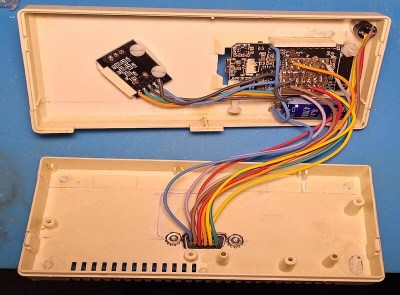Plenty of consumer goods, from passenger vehicles to toys to electronics, get tossed out prematurely for all kinds of reasons. Repairable damage, market trends, planned obsolescence, and bad design can all lead to an early sunset on something that might still have some useful life in it. This was certainly the case for a sound system that [Bill] found — despite a set of good speakers, the poor design of the hardware combined with some damage was enough for the owner to toss it. But [Bill] took up the challenge to get it back in working order again.

The main problem with this unit is that of design. It relies on a remote control to turn it on and operate everything, and if that breaks or is lost, the entire unit won’t even power on. Tracing the remote back to the control board reveals a 15-pin connector, and some other audio sleuths online have a few ways of using this port to control the system without the remote.
[Bill] found a few mistakes that needed to be corrected, and was eventually able to get an ESP8266 (and eventually an ESP32) to control the unit thanks largely to the fact that it communicates using a slightly modified I2C protocol.
There were a few pieces of physical damage to correct, too. First, the AC power cable had been cut off which was simple enough to replace, but [Bill] also found that a power connector inside the unit was loose as well. With that taken care of he has a perfectly functional and remarkably inexpensive sound system ready for movies or music. There are some other options available for getting a set of speakers blasting tunes again as well, like building the amplifier for them from scratch from the get-go.


















